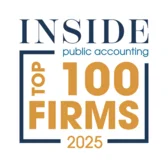Key Takeaways
- There are five key changes that may affect manufacturing and distribution
- Experts say the initial compliance burden will be at least an 8on a scale of 10.
- Smaller companies, with limited accounting staff, may take longer to get up to speed.
- Private companies were given an extension to adopt during 2020. Public companies are already subject to ASC 606
The new revenue recognition rules prescribed by Accounting Standards Codification Topic 606 (“ASC 606”), Revenue from Contracts with Customers, went into effect for public companies on January 1, 2018, and on January 1, 2019, for private companies. However, due to the COVID-19 pandemic, private companies were given a one-year extension to adopt ASC 606; therefore, calendar year companies can now adopt as of January 1, 2020.
There are five steps defined in ASC 606 that a company will have to go through for each of its contracts under the new guidance. It will take some time for all companies, including those in the manufacturing and distribution sector, to get up to speed on the new revenue recognition landscape that will be required under accounting principles generally accepted in the United States of America (“GAAP”).
Five Most Significant Changes to Manufacturers and Distributors
Here are five of the most important changes likely to impact companies in the manufacturing and distribution sector as a result of the new revenue recognition guidance.
- Measuring a performance obligation over time. This may be the most significant of the five major changes. For certain manufacturers that produce a large number of similar items that are unique and geared to a specific customer, they may be able to recognize revenue sooner, i.e., at the time the products are being produced, rather than waiting until the products are shipped to the customer. Companies will need to review their underlying contracts to determine if this change will affect the timing of their revenue recognition.
- Rebates and volume discounts. The period in which a customer can apply an earned rebate or discount will either affect the price of the contract OR the number of obligations a company must perform under the contract. Both will have the effect of changing the timing of revenue, and in most cases, delaying revenue recognition.
- The cost to obtain a contract. The new rules allow for the capitalization of certain direct costs to acquire a contract. Those costs can be capitalized and amortized over the life of the contract. Doing so will better align costs and revenues and will allow a company’s costs to be deferred into future periods. Under the old rules, capitalization of direct costs was limited primarily to construction contracts.
- Warranties. When it comes to warranties, the most significant impact is that your revenue may be deferred into future periods, depending on whether the warranty is a service or assurance type warranty.
- Shipping terms. In the past, revenue recognition was based on the shipping terms and when the risk of loss was transferred to the customer. Now, you can recognize revenue earlier in some cases if shipping is determined to be a separate responsibility from the product. As long as the customer has the ability to use the good (e.g., resell the good to one of its own customers), then the company can recognize revenue when control of the good transfers to the customer.
Consider the Effects of the New Guidance
Some manufacturing and distribution companies have simple-to-assemble products that are quickly assembled and shipped. They generally won’t have too much trouble with the rule change. But, many manufacturing companies have lengthy start-to-finish timelines in their processes, and will most likely be impacted by the new revenue recognition landscape.
Example: Let’s say an aerospace company produces a specialized part that takes three months to build. In the past, the company would use the “percentage of completion” method to recognize revenue in stages until the project was 100 percent completed. Sounds logical, right? But, some companies would wait until the entire project was finished and shipped. Revenue wasn’t always being treated consistently in the industry, and it became harder and harder to compare companies with each other. In order to address these inconsistencies in practice, the GAAP accounting rules and interpretations related to revenue recognition were becoming more and more complex, thus driving the need for ASC 606.
The new rules under ASC 606 should streamline revenue recognition accounting and provide some room for interpretation of those principles. If you’re lucky, there may be no significant change to your company’s revenue recognition policy. But you’ll still need to perform a detailed analysis in accordance with ASC 606 for each and every one of your customer contracts, which could be complicated and burdensome for some companies.
Conclusion
We have long known that changes were coming as a result of ASC 606, but are surprised by how extensive those changes have been, and more importantly how much prep time has been required by entities to adopt the new guidance. Therefore, it’s critical that companies start working on the implementation now. Spend some quality time looking closer at your contracts and preparing your systems to account for transactions under this new revenue recognition standard.
Be proactive. Review the Five Key Steps in ASC 606 and your key contracts. Hire an accounting consultant if adoption of the new revenue recognition standard makes you feel overwhelmed. In the long run, it will be worth getting up to speed as the new rules may result in significant changes for manufacturing and distribution companies, particularly in the areas of (a) Measuring Performance Obligations Over Time, (b) Rebates and Volume Discounts, (c) Cost to Obtain a Contract, (d) Warranties, and (e) Shipping Terms.
For more information about ASC 606, visit Revenue Recognition/ASB 606.


